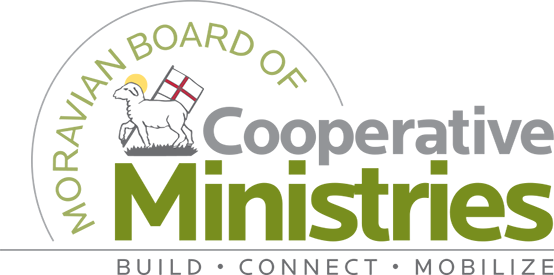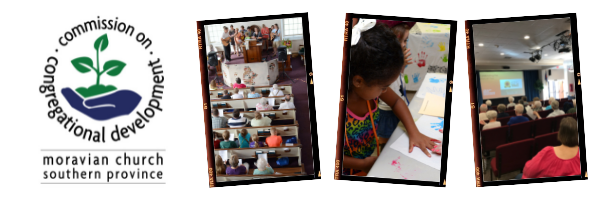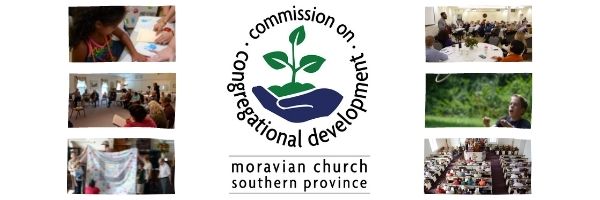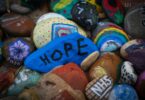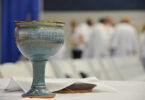
BY WILLIAM NEEDS |
Note: This is part of a monthly blog series, “Coffee with Moravian Ancestors.” Bill sits down with important figures in the Moravian church to have a cup of (Moravian) coffee, asking questions about his or her life and how they have impacted the church! Look for Bill’s other blog posts here. To accompany his blog posts, he has drawn the images from his trip to Europe on the Roots of the Moravian Church Tour. For more art, visit Bill’s website at BillNeeds.com.
__________________________
The spiritual influence of Moravian Brethren grew across the world, first as a pious “society” in diaspora, then as a model for foreign missions. However, political and economic realities began to challenge its organizational framework. Decision-makers struggled with questions: Is it practical to require a missionary to be financially self-dependent; must a missionary be ordained to perform sacraments; must the Moravian Brethren become a formal “Church” for missions to succeed?
Meanwhile, requests to station Moravian missions in foreign lands continued to arrive in Herrnhut. One example is found in the development of missions to South Africa.
It was 1736, the same year Zinzendorf was banished from his home in Saxony when a letter was received from Calvinist clergymen in the Netherlands requesting volunteers to evangelize the “Hottentots” on the Cape of Africa.
The Dutch were establishing “the Cape” as an important supply stop for ships traveling between Europe and India. As the colony of Cape Town grew, the native population was being forced out by disease or by design, with catastrophic consequences.
Coffee with Georg Schmidt (1709-1785)
Q. Brother Georg, what prompted you to enter the mission field?
A. I was the son of a peasant family in Kunwald. I learned how to read but I apprenticed to become a butcher since I had no means to receive higher education.
Our family was not part of the ancient Bohemian Brethren. I chose to be baptized when I turned 16. My faith was simple and personal. I had a good voice for singing but was quiet-natured, not inclined to be eloquent or persuasive. I felt influenced by Jesus and trusted He would lead me in a direction that would deepen my conviction and abilities over time. Like other migrants from Kunwald, Christian David was a “role model” who influenced my decision to become an evangelist.
I was nearly 18 when I set off, alone, on foot, on the same path made by Christian David across the Carpathian Mountains through Silesia into Germany. I arrived in Herrnhut hoping the renewed Unitas Fratrum might use my meager talents.
My first “mission” assignment came in 1728 when I was sent back into Bohemia accompanied by Melchior Nitschmann, seven years my senior. We knew our task violated the laws of the Roman Catholic Church so we split up to arrange religious meetings in secret. If found, the punishment would be harsh.
Our freedom was short-lived. Both of us were arrested separately and convicted to prison, Brother Melchior died in prison a year later. I endured 6 years of imprisonment and torture. Finally, I paid their price; I recanted my faith to keep my life and freedom.
When I returned to Herrnhut, I learned Brother Melchior had become a martyr for the cause of Christ. Because I had renounced my faith for freedom, I received a “cool” reception.
Q. You’re saying you were shunned for recanting in order that you might live?
A. Remember, the name “Nitschmann” was very influential in Herrnhut. It was no surprise that my presence in Brother Melchior’s absence would touch a raw nerve for his family and the commune. In fact, some Elders felt I should never again be allowed to represent the faith of the Unitas Fratrum. Although I was permanently crippled from punishment endured while imprisoned I was assigned to work as a cook.
My fortunes changed when a letter came from two Reformed clergymen in Amsterdam requesting volunteers to evangelize the native inhabitants on the Cape of Africa. I was considered and the lot affirmed I should go.
Q. A call to South Africa? Is this why the change in heart and why you were chosen?
A. In 1736 numerous changes were occurring simultaneously: Count Zinzendorf was banished from Saxony; Moravian missions were expanding through the West Indies and Suriname into the continent of America; Moravian societies were expanding from Europe into England; the Great Awakening was rapidly spreading across Europe.
In Herrnhut, my constant witness to the work of the Lord in the Single Men’s Choir was noticed, warming those who had resented me. I was also single and; although not ordained a clergyman, I was eager to serve.
Those who made missionary assignments probably considered the prospect for success was too slim to waste the talents of an ordained pastor. When the lot chose me to go, I was issued a certificate of authorization to travel to the Cape for the purpose of winning a few souls for the Savior, if possible, and assured I would not interfere in worldly matters.
I also received Zinzendorf’s written instructions which read:
continue asking forgiveness of our Savior for your revocation, ask for His guidance for evangelistic opportunity, carry out your work alone, accept no presents or honors, and survive solely on the fruits of your labors in order to teach the natives the dignity of labor.
Although all other Moravian mission assignments were given to teams of Brethren, I was sent alone – well, except for the constant presence of my Lord. I was 27 when I left for the mission.
Q. It seems strange that Moravian assistance was requested by representatives from the Reformed Church. What arrangements were required for you to get passage to the Cape?
A. At that time, the Cape was a small dependency of The Dutch East Indian Company established in 1652 to supply provisions to passing ships on their way between Europe and East India. The Cape was ruled by a “Council of Seventeen” residing near Amsterdam. They oversaw the interests of the Netherlands and of the Dutch Reformed Church. The Dutch Reformed Church assured that colonists and their slaves receive religious instruction by clergymen (ordained by the Dutch Reformed Church) known as Predikants. Predikants on the Cape were paid well by The Dutch East Indian Company.
Members of the indigenous Khoikhoi and Sans tribes were called “Hottentots” by the Dutch. They were outside the jurisdiction of The Dutch East Indian Company and even outside the interest of the Reformed Church. The only purpose for continuing relations with the “Hottentots” was for the army to purchase beef and produce in exchange for brandy and beads.
Leaving Herrnhut with my certificate of authorization from Zinzendorf, I arrived in Amsterdam to encounter mandatory scrutiny by the Council of Seventeen. That was followed by interrogation by a panel of Predikants. All found my motives unblemished so additional forms were prepared, one signed by the two Prediikants who had requested my service. Armed with these documents, I boarded a ship bound for South Africa and the adventure that lay before me.
The four-month voyage gave a hint of what I would encounter. I was shocked by the sinful and careless behavior of the sailors on board. I watched for opportunities to talk privately with the captain and with soldiers on guard duty about the salvation of their souls. Upon arrival, I had not only improved my Dutch language skills but I had also led three men to Christ.
Arrival in Cape Town was no less challenging. There were no Khoikhoi living near the coast. Handing my papers to the current Governor of the Cape he explained transportation inland would be provided when soldiers go to resupply their fort.
He arranged temporary residence at a local inn while I waited.
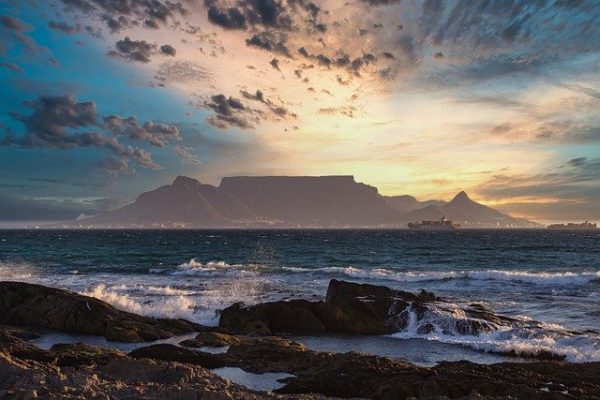
Cape Town, South Africa | Photo via Pixabay
Q. What was it like to transition from the sea, to the city, to the “bush” of South Africa with so few other Europeans nearby?
A. At the inn I overheard conversations among guests who scoffed at the arrival of the fool who had come to convert the Hottentots without a penny from The Company. Later I heard Reformed clergy also mocked me for my fantasy to bring Christ to Hottentots who have no soul.
Fortunately, I was befriended by one member of the Governing Council of the Cape. Captain Rhenius was originally from Lubeck, Germany, and respected the pietist movement. He worked for The Company and had resided on the Cape for nearly 50 years. He agreed with the assessment of Amsterdam’s Predikants who described conditions for Hottentots as appalling.
He told me I should understand they were a hunter-gatherer society who in recent generations had begun domesticating cattle which they follow in search of water and grazing land. Having no permanent towns or communities they lived like nomads in huts that could easily be broken down, moved, then reassembled.
Because their language was impossible to understand and difficult to imitate, they were considered inferior. No effort was made to assimilate them. It was reported that Dutch Colonists would occasionally, while on hunting trips, shoot the Hottentots as if they were some sports game.
Europeans brought illness and attitudes of dominance which was pushing the Khoikhoi culture to the point of extinction.
Q. Were you disheartened by the attitudes about the work you planned for the Cape?
A. Yes, the disrespect did bother me. Two months after my arrival, I gladly departed Cape Town to get on with my work. It was September 4th, when an Army Corporal and two Hottentots loaded me and my possessions onto an oxcart to begin a nine-day trek through the bushveld to a lonely army post housing a few soldiers, near the Zondereind River and a small neighborhood of Khoikhoi nearby.
My oxen driver was a Khoikhoi named Africo. He spoke Dutch and was to become my friend and interpreter, later a convert.
Rather than living in the barracks with the soldiers, I borrowed a tent from the corporal to begin living among the Khoikhoi. I helped Africo work his garden and he allowed me space to plant vegetables for myself. Africo tried to teach me his language but it was difficult. Besides sounds of vowels and consonants, their language required an important series of clicking sounds made by the tongue. I soon decided I was unable to duplicate that sound so, by the end of October, I began teaching Dutch on weekdays, then reading the Bible on Sundays to explain the story of our Savior.
Q. After a rocky start among Cape Town’s residents, how was your reception among the Khoikhoi?
A. When I first arrived many Khoikhoi thought I was there to trade cattle. Then I began sharing my crop and my message. It did not take long before I had a following of 18 students and a change of heart.
It was obvious that remaining near the soldiers’ post was detrimental to my work. After prayer and affirmation by the lot, I asked for permission to move to another location. In April 1738 I was moved to Baviaanskloof, 3 hours to the east. Soldiers help me erect a hut that would become the first Protestant mission in South Africa, later named Genadendal.
I baked my own bread, made my own candles and bedding, and washed and mended my own clothing. I butchered livestock when needed in exchange for supplies. Near my hut, I dug a water furrow and planted a garden with fruit and hardwood trees. When the weather allowed, we had daily lessons outside in the shade of the trees. I was pleased when I observed some students praying by themselves.
More Khoikhoi from the surrounding area arrived to set up huts then, following my example, gardens. By the end of 1738, I had 28 students although attendance fluctuated from obligations to follow their cattle or collect roots. I taught European methods for planting and sowing vegetables, not only to improve their nutrition but also to assure regular school attendance.
I sent letters back to Herrnhut describing my initial success. Apparently, my reports drew attention because my requests for assistance were reconsidered. Brother Paul Schneider and his wife were chosen and sent to Holland to begin the vetting process required by Dutch Church and government.
Unfortunately, at that time, storms swirled around statements being made by Count Zinzendorf which did not conform with Reformist sensitivities. It also did not help that Zinzendorf was a proclaimed Lutheran.
It took time to work out the misunderstandings. Finally, approval was received from the Council of Seventeen in March 1739 but too late. Brother Schneider had succumbed to tuberculosis.
Q. Unfortunate, yes, but at least approval was finally given from Holland for some assistance from Herrnhut. Did you then get the assistance?
A. It took time for reports from proceedings in Amsterdam to reach Cape Town and that only added to the confusion. Then, Captain Rhenius sent me a note from Cape Town advising I should proceed carefully.
It seems the Cape’s governing leadership was changing in the midst of growing unrest between Colonists, Bushmen, and Hottentots.
Predikants on the governing council were astounded that Hottentots were actually learning to read and understand Dutch. Rhenius warned ridicule of my efforts was turning into enmity.
Should I slow up my evangelistic efforts to conform with the Predikants’ resistance, or speed up? I put the matter to prayer and the lot gave the answer “speed up.”
Then I received a letter from Bishop David Nitschmann instructing me to “not tell the Hottentots anything but that there is a Savior who died out of love for all men … If they show signs of belief in Jesus, they may be baptized…”
I was puzzled by this instruction. The original directive was that I should teach the Hottentots the love of Christ. I had not baptized, however, because I was not ordained.
My work with the Khoikhoi continued although hobbled by conflicting or ambiguous directives from leaders in Herrnhut, the Council of Seventeen in Amsterdam, and the Governing Council in Cape Town. I waited for directives through the winter of 1740 but it was particularly difficult. I dealt with physical ailments, permanent remnants from my torture in Bohemia. And, with emotional distress when a ship from Europe foundered in a storm, losing all mail deliveries.
Q. Is there not a limit to how much disappointment can be tolerated? Were you reaching your limit?
A. I was the victim of unfortunate circumstances. I heard that Zinzendorf was making irrational proclamations in Europe and that was taking a toll on the message of the Moravian societies. Bizarre behavior was reported in Herrnhaag which cast doubt upon “holiness of piety” in general and upon some Moravian leaders in particular. And tensions continued between the doctrines of Calvin’s Dutch Reformed Church and doctrines of the Lutheran Church.
In the meantime, I was being worn down by loneliness in South Africa, chronic pain, and apparent lack of support from Herrnhut. This condition worsened when I saw some Hottentot converts lapse in their commitment and slide back into their old tribal behaviors.
For six years I lived alone…well, me and my Lord. “We” taught the Khoikhoi to read and write Dutch. Gradually they learned to read the Dutch Bible and then began to understand the Love of God I had been trying to teach and demonstrate by simply patiently living among them.
By and large, the Dutch colonists were illiterate. When they realized some despised Hottentots could read and write a language which they could not, I became a source of indignation. Dutch farmers slandered me. Rumors were spread that I was a spy, or secretary of rebel political forces, or committed adultery with Hottentot women my “students.”
Predikants from Cape Town’s Dutch Reformed Church were embarrassed by my successes but, rather than changing their hearts to be more accepting of the enlightened “Hottentots,” they simply wanted me gone.
I did not come to South Africa to sow hate and discontent. I simply wanted to teach the skill of reading and point the Khoikhoi to Jesus Christ.
Q. As you approached the seventh year of your mission work, how did you deal with these conflicts?
A. The question of baptizing those who truly believed became an issue of increasing importance. Despondent, I communicated my concerns and offered to return to Herrnhut to plead my case in person.
I had no way of knowing that Herrnhut leaders were now regretting not having given the mission in South Africa more serious consideration. After the fact, they mulled over why they had not sent four missionaries to accompany me.
In March 1742, I finally received a letter from Zinzendorf who wrote, in summary, “If they (the Khoikhoi) feel something, pray with them. If not, pray for them. If the feeling persists, baptize them.” Accompanying that letter was a certificate prepared in Holland by Zinzendorf formally ordaining me, dated August 27, 1741. I concluded that the letter and certificate were in response to my progress reports from 1740.
Q. Well, you finally received the encouragement and even vindication for all your effort. What followed?
A. I did feel encouraged, but I harbored the thought that perhaps this authorization was intended only for the Hottentots in the interior, those for whom nobody else cared.
Days later, I discussed the letter from Zinzendorf with an accomplished student. When questioned about the differences between Moravians and Reformists, I tried to present the matter of faith in the simple light of “essentials and non-essentials.” This was followed by explaining the purpose of baptism. That evening I conducted my first baptism in the stream where we met.
Within 2 weeks, I baptized four others, one by one, in running water. During the weeks that followed, I conducted special outdoor meetings daily. Under the shade of trees near my orchard, I was able to minister to my little congregation of five. I gave them “Christian names”: Brothers Joshua, Christian, and Jonas; Sisters Christina and Magdalena.
Word of our zeal found in Christ spread from our little community to the soldier’s post, then to Cape Town. Word came back indicating protests from some Predikants who disapproved of my actions.
Q. Now representatives from the Reformed Church questioned your right to baptize after they had spent 30 years ignoring the Hottentots. What changed?
A. I returned to Cape Town to determine what I had misunderstood. What had I done wrong? Requesting a meeting with the Council, I waited three weeks in vain for an explanation. As I was packing to return to the mission, I received word from the new Governor that it had been decided that Moravians in Herrnhut had no right to ordain ministers on the Cape. That ecclesiastical responsibility was only for the Reformed Church.
Furthermore, according to rules of the church, “the so-called “Hottentot-converter” had not been properly examined by the Predikants, therefore should not be allowed to give religious instruction unless conforming with the Reformist tradition. Without this permission, any religious instruction given the Hottentots outside the fundamentals of Reformed doctrine was not credible. Baptisms performed outside a congregation of the Reformed Church were null and void.
Finally, three Predikants added a personal note that I should be recalled.
Q. Now what? Did you have any recourse?
A. Well, I was offered permission to baptize children of simple Colonists on the other side of the mountains – a location difficult to reach, and dangerous, and requiring lengthy periods of absence to serve.
I wrote to Herrnhut, and to Holland, too. Of course, my correspondence sat idle until the next sailing vessel for Europe arrived.
In the meantime, the Church Council and three Reformed Congregations on the Cape continued to build their case. They increased slandering me to heat-up the Hottentots’ suspicions. They interviewed Brothers Joshua and Christian and found little fault from their statements of faith. Nevertheless, the line of questions raised concerns among the Khoikhoi.
Without word from Holland, and with the Moravians being denied the opportunity to publicly defend their faith, I left the Cape on January 6, 1744. Genadendal returned to its old name Baviaanskloof. I was 33 years old.
Q. What did you do after your departure from the Cape, and what do you see as the legacy of your mission work in Africa?
A. In hindsight, it seems ambiguity was a major obstacle for my failed missionary efforts. What we had here was a failure to communicate, literally and figuratively. Of course, Moravian Brethren were contending with other matters which negated their simple message.
Letters from Herrnhut, if or when they did arrive, often granted me permission but few gave me instruction. Perhaps my revocation of faith which early saved my life influenced the Moravian leaders to question my spiritual persistence. Perhaps my reliance on the lot rather than trusting my own God-given instincts also deterred success in South Africa.
I spent 43 more years of my life, more or less inconspicuous, dedicated to teaching and preaching the love of Christ to those without a church in mostly Bohemia, Silesia (Poland), and Moravia. However, I never missed a day in prayer for my little congregation in South Africa.
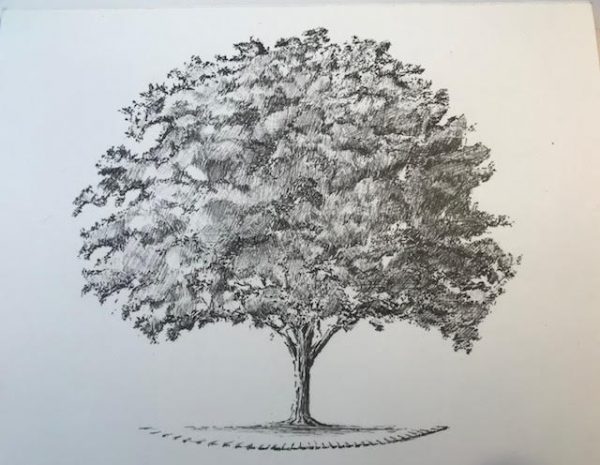
The Pear Tree of Genadendal | Drawing by Bill Needs
Q. And that’s the end of the story?
A. That’s not the end of my story. Thank God, there is more.
Fifty years later, the Moravian Brethren had recovered from the Sifting Time and were establishing their reputation as a notable Protestant Church in Europe, recognized as the leader in foreign missions.
In 1792, 50 years after leaving my task unfinished, and 7 years following my death, three Moravian missionaries were allowed to return to South Africa. On Christmas Eve they met at a location they thought might be Baviaanskloof.
Expecting to find no traces of my work, they were delighted to uncover ruins of my house behind which they found indications of the water trench leading to an outline of my garden and orchard, and one pear tree still bearing fruit.
Asking local Hottentots if any remembered the missionary who had lived there, they were taken to a hut in which an old woman lived. That lady, now almost blind, said, “Mynheer Schmidt baptized me and gave me the name of Magdelena. I’m called Lena now.”
With that, she went to the corner of her hut, fumbled through a couple of sheepskins to find a leather bag. Inside was the Dutch New Testament that I had given her at baptism. When asked if she could read it she shook her head pointing to her eyes but passed the Bible to her granddaughter to read aloud. She then explained she had taught her daughter and granddaughter to read from that Bible under the shade of that pear tree still standing in my garden.
Although I was denied from tending my garden and my little flock, the Holy Spirit remained to assure the pear tree would continue to blossom and the Word of God would continue to be read and taught. That, I pray, is my legacy.
Q. That’s a beautiful ending to a tumultuous story. Is that now the end?
A. Indeed, it is only the beginning. Finding Magdelena and hearing her testimony was the incentive needed for the three missionaries to settle in. Using materials from my hut they built a more substantial house. British occupation at the Cape in 1795 encouraged more building. The settlement of Baviaanskloof was reborn.
One missionary was a knife maker by trade. In 1797 he received permission to build a forge after which he began manufacture of the fabled “Herrnhut knives” for the entire colony. The hamlet in the valley called Baviaanskloof flourished and, in 1806, returned to its “Christian name,” Genadendal.
Our coffee conversation continues on March 20 with Brother Georg Schmidt, Moravian missionary to South Africa’s Hottentots.
__________________________
About the Author

Photo courtesy of Bill Needs.
Raised in the Moravian Church in Dover Ohio, Bill graduated from Moravian College in 1962. A drop-out of Moravian Theological Seminary, Bill now lives with his wife, Sara in Marietta, Georgia. Bill’s career served disabled individuals and employers in providing realistic vocational choices as a Vocational Rehabilitation Counselor. After retirement in 2004, Bill discovered he had a previously unknown artistic talent for drawing. Now, when Bill and Sara travel, he supplements his photography record with art inspired by the scenes and experiences. For more art, visit Bill’s website at BillNeeds.com. For discussion about art or blog content, email [email protected].
Requests for republishing, click here.
Want to volunteer to write for us? Click here.
